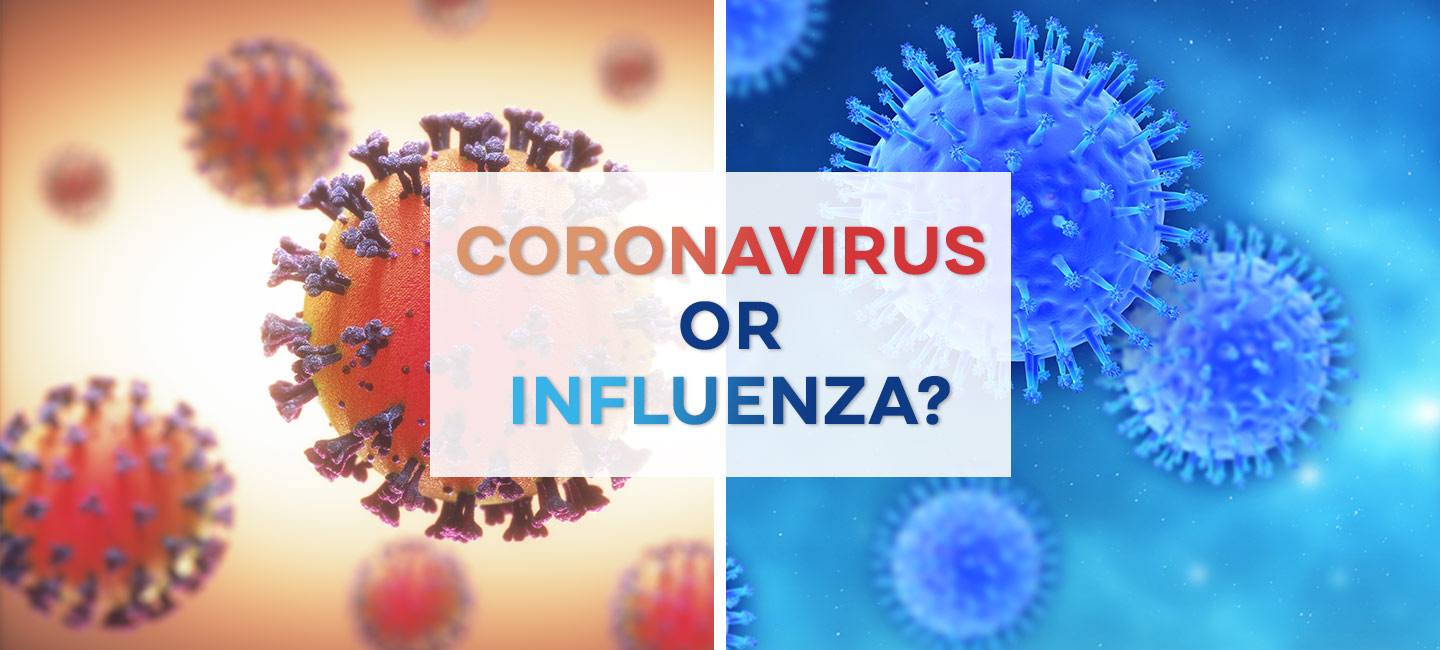The Flu vs. COVID-19
For the past six months, the world has been focused on COVID-19. But as we enter the fall, there is another concern: the flu.
Because some of the symptoms of the flu and COVID-19 are similar, it may be hard to tell the difference between them based on symptoms alone. Both respiratory illnesses share a lot of the same characteristics, but there are some key differences between the two.
What are the symptoms?
Both COVID-19 and the flu can have varying degrees of signs and symptoms, ranging from no symptoms to severe.
Symptoms the flu and COVID-19 share are:
- Fever or feeling feverish/chills
- Cough
- Shortness of breath
- Fatigue
- Sore throat
- Runny or stuffy nose
- Muscle pain or body aches
- Headache
- Some may have vomiting or diarrhea, although this is more common in children than adults
Differences:
COVID-19 symptoms may include change in or loss of taste and smell.
If you are experiencing symptoms, you should call your primary care physician and get tested for both the flu and COVID-19.
“You need to go get assessed because if it is COVID-19, you need to start that two-week quarantine clock that does not exist for the flu,” said Dr. Aliyah Baluch, an infectious diseases specialist at Moffitt Cancer Center. “That is an important difference because that is a social aspect.”
When do symptoms appear?
Flu: Typically, a person develops symptoms one to four days after infection.
COVID-19: Typically, a person develops symptoms five days after infection, but symptoms can appear as early as two days after infection or as late as 14 days.
How long am I contagious for?
Flu: Most people are contagious for about one day before they show symptoms. Older children and adults appear to be most contagious during the initial three to four days of their illness, but can remain contagious for up to seven days.
COVID-19: This is still under investigation, but it is possible for people to spread the virus for about two days before experiencing symptoms and remain contagious for at least 10 days after the symptoms first appear.
Researchers and physicians are optimistic that wearing a mask to stop the spread of COVID-19 will also have a positive effect by leading to a decreased rate of flu this year.
“Without a doubt it will help,” said Baluch. “The spread of flu is only droplet associated so if you are wearing a mask that is appropriate it will protect you and others.”
Is there a vaccine?
Flu: There are multiple influenza vaccines produced each year to protect against the three or four viruses that scientists anticipate will circulate each year.
If you are a cancer patient, the traditional flu vaccine—made from the dead flu virus—is safe for most. You should not take the nasal spray, which is made from a weakened live virus. This could cause illness in a person whose immune system is compromised from cancer treatment.
Just because you are wearing a mask does not mean you should forgo the flu shot this year.
COVID-19: While vaccine developers have expedited the development of a COVID-19 vaccine, there is currently no vaccine available.



